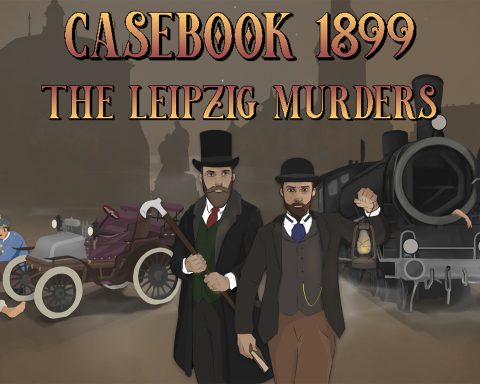CounterSpy places itself within the Cold War. Two sides, the Imperialist States and the Socialist Republic are competing in the Space Race. But it’s not the race you’re most likely thinking of. It’s a race to blow up the moon. C.O.U.N.T.E.R. has been tasked with finding the launch plans for both parties, to prevent the destruction of the moon.
If that introduction doesn’t clue you in, CounterSpy is ridiculous. The game was developed by Dynamighty, a team composed of former LucasArts and Pixar staff, and that heritage explains why the game is absolutely beautiful to look at. Dynamighty seems to have taken inspiration from the simple colour palettes of games like Team Fortress 2, having two sides, red and blue, and while they are both similar, their bases have distinct characteristics.
Players alternate between infiltrating the two enemy bases collecting intel, as well as research and weapons plans that can be used to upgrade the spy you’re in control of. Although the campaign is quite short, every level is randomly generated. And here lies on of the fundamental problems on CounterSpy. The best stealth games have the player scout our the environment, and establish their threats. Once this knowledge is acquired, a good spy game will then allow players to move through the level in any way they see fit. But because CounterSpy is randomised, when you move from room to room, rarely do you where the enemies are placed within the room, and so strategy is replaced by a guessing game. I encountered multiple instances where guards will be shooting at my little spy man from off-screen, and I had no means of easily fighting back.
Although sneaking is the primary objective, being discovered isn’t an automatic game over. The game places importance on the DEFCON level of the Imperialists and the Socialists. When you reach the end of the level, the DEFCON level is lowered. Each side has its own DEFCON level, influencing which side the player decides to infiltrate. If the player increases the DEFCON level too far, they are given a small period of time to make it to the end of the level.
This is all fine in theory, with the biggest problems in CounterSpy poping up whenever there’s action sequences While most of the game is stealth orientated, there are also combat sequences which play out like an arcade shooter. If it’s possible to sneak past the guards then you won’t have any problems, but when the randomised level design forces you to spend time killing every guard, it makes for a very generic experience.
The one aspect that Dynamighty have absolutely nailed is the presentation of CounterSpy. Music is reminiscent of early morning Saturday cartoons, while the cel-shaded art style only adds to the comic-like story. There is also moments where the randomisation comes together to offer very clever level design. Levels always move left to right, with more difficult areas branching downwards. Depth also plays an important role in creating additional movement paths for enemy AI.
CounterSpy likes to think of itself as a stealth game, but there are multiple occasions where it is more than that. It’s also an action game. Dynamighty has tried to blur the lines and it hasn’t worked. The shooter sections feel out of place, and they almost feel like they’ve been included to flesh out the already short campaign. Which is a shame, because the action is perfect.
– Sam M.
Contributor










